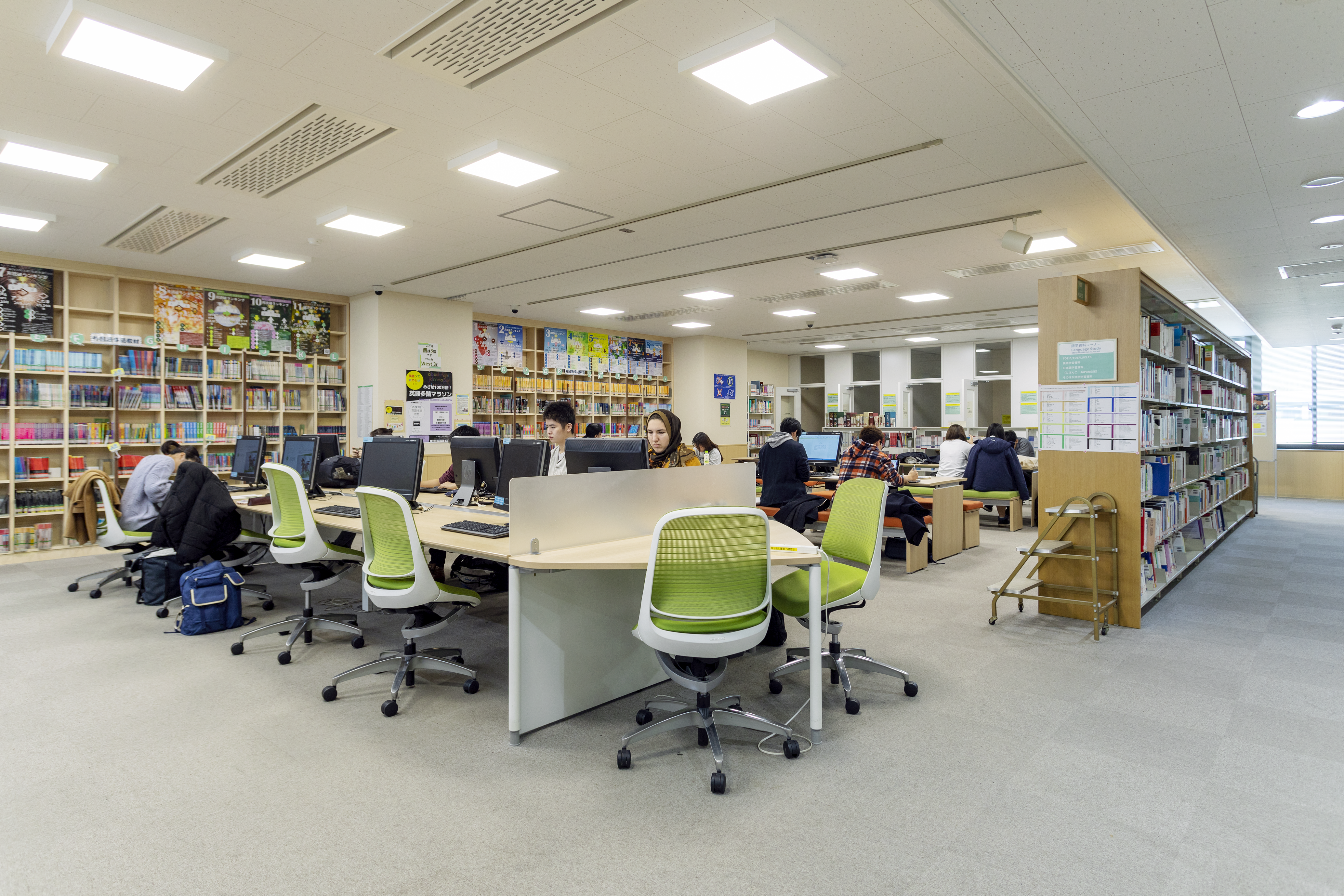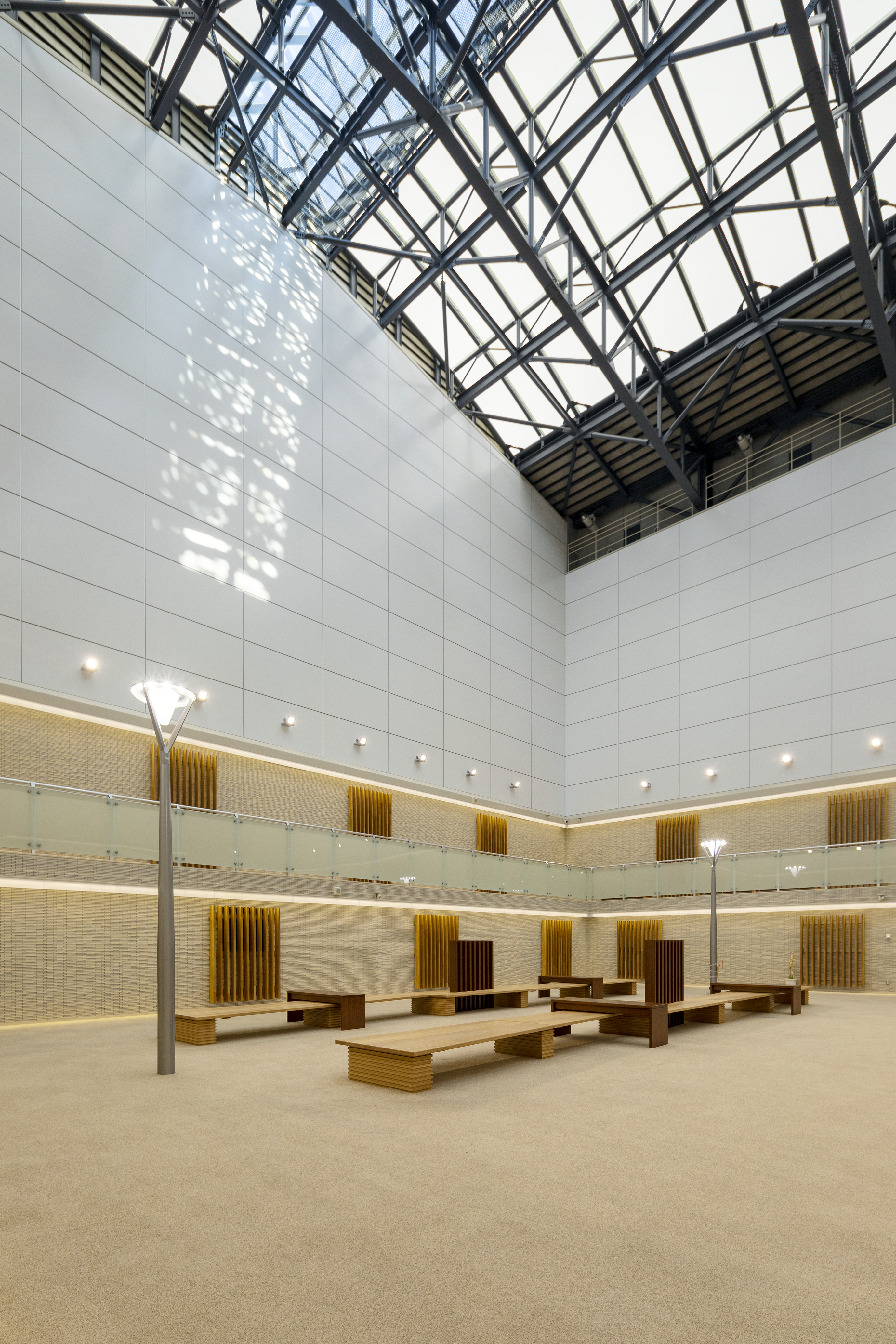University Library: Base for the exchange and creation of knowledge
University News | March 31, 2021
This article was published in the Spring 2020 issue of Litterae Populi. The full list of articles can be found here.
The University library is where knowledge is accumulated. The library serves as a place for the exchange and creation of knowledge through learning support for students, preservation and presentation of the university’s research results, support for lifelong education of the general public and other activities.
A library with 6,149 books was established at the same time as the opening of Sapporo Agricultural College in 1876. This is where the history of the Hokkaido University Library began. The first director was Nitobe Inazo. The tile-roofed white library building (currently registered as a tangible cultural asset by the national government) constructed in 1903 was used until 1965 when the current Central Library was built. In 1969, the Branch of General Education (present North Library) was newly built.
The library was renamed the Hokkaido University Library in 1947 after World War II. The library currently manages the Central Library near the front gate of the Sapporo Campus, the North Library near the Institute for Advancement of Higher Education and 16 departmental libraries in departments, faculties and research centers, which house approximately 3.78 million books and 55,000 electronic books/journals in total.
Based on the university’s four basic philosophies of “Frontier Spirit,” “Global Perspectives,” “All-round Education” and “Practical Learning,” the mission of the Hokkaido University Library is to promote social contribution and internationalization while improving its support for education, learning and research. The library is making various efforts to fulfill its mission during this time in which there is a growing tendency for university students to not read books and society is becoming increasingly information-intensive and digitized.
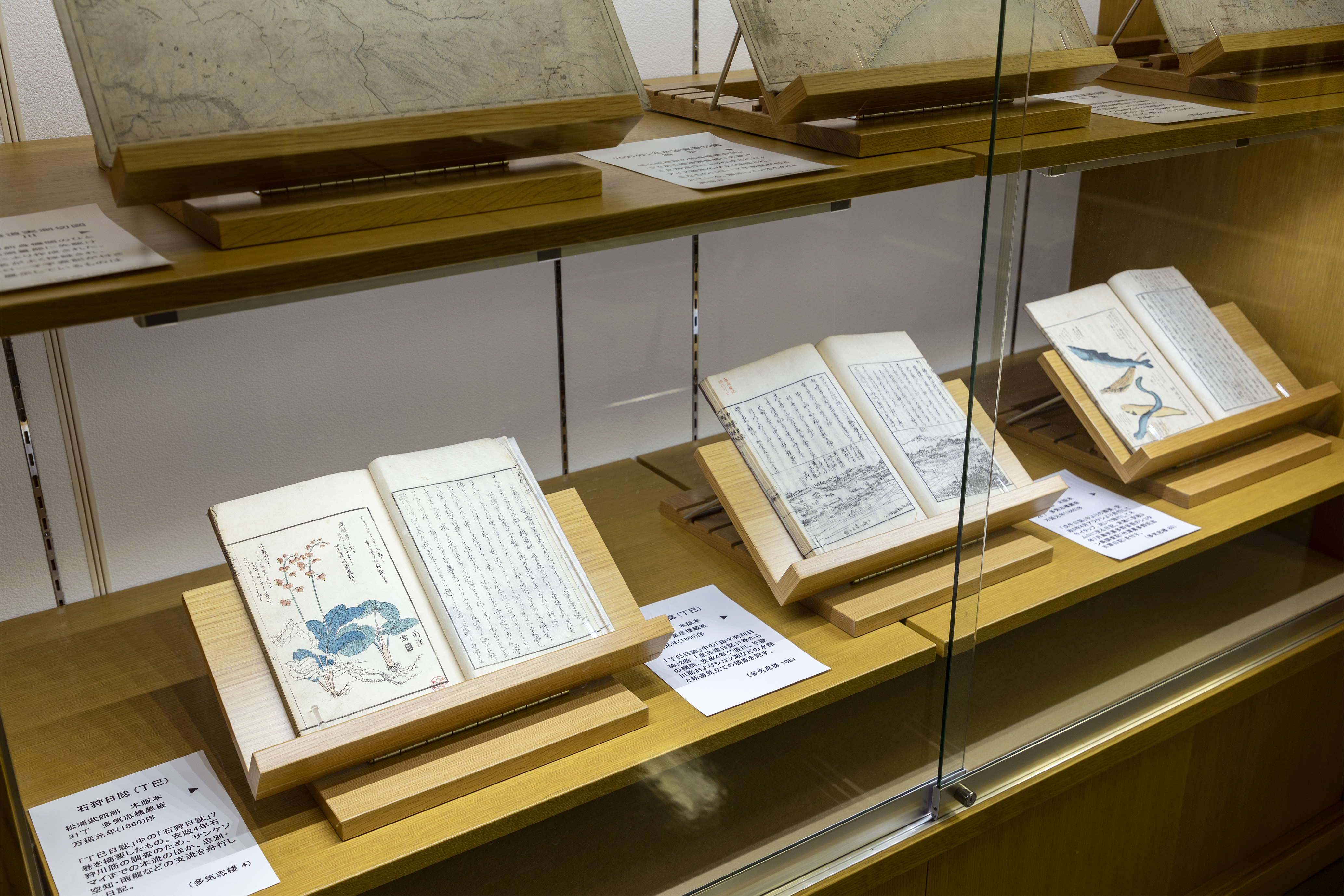
Northern Studies Collection reading room of the Central Library. The collection displayed in this room includes books written by Takeshiro Matsuura, who gave Hokkaido its name.
Nurturing students
One important role of the University Library is to provide support for education and learning. The library is conducting various projects and seminars in cooperation with other departments in the university.
The Academic Skill Seminar offers seminars and supplementary classes for undergraduate students in cooperation with the Learning Support Office, which provides learning support and career consultation for students. One of its programs, the Study Skill Seminar aimed at teaching new students how to take classes and write reports, was held 34 times in AY 2018, with a total participation of 520 students.
The English Tadoku (extensive reading) Marathon is a project enabling students to learn English while having fun. Each participant reads English books at his/her own pace and records the book titles, number of words and other details in the system with the goal of reading one million English words. This improves the motivation of participants, with graphs of the total number of words read and rankings that can be seen at a glance. The total number of participants since the launch of the project in AY 2013 has reached 1,780, with 322 participating in AY 2019. So far, 36 students have read more than one million words. The Central Library, the North Library and the library of the School of Fisheries Sciences have English Tadoku Kyozai (graded English readers) sections to provide an environment where students can start extensive English reading easily and at any time.
The University Library also focuses on information literacy education. It offers education to improve information collection skills through programs such as Introduction to Library Information classes for first-year undergraduate students and the Literature Collection Seminar for third-year undergraduate and first-year master’s students.
The library is also active in the digitization of library materials in cooperation with the Accessibility Services Office of the Student Advice and Counseling Center, and had digitized approximately 400 items by the end of AY 2018, to ensure that students who have difficulty in reading due to visual, physical and other impediments have the “right to read.”
Such education and learning support activities are also linked with the support for active learning that is emphasized in university education, and provide the support necessary for students to pursue learning by doing their own research and autonomously performing the preparation of reports/theses and other processes. Environments for discussions and joint projects among students, such as the open area and media court in the Central Library as well as the active learning floor and global floor in the North Library, are also available. The library provides support for nurturing students and enabling them to learn and independently solve challenges, while complementing classroom lessons.
Knowledge sharing
Another important role of the library is to preserve the results of the university’s education and research activities and broadly share them with society. The Hokkaido University Collection of Scholarly and Academic Papers (HUSCAP), which has been operated since 2006, makes academic papers and other documents written by researchers, graduate school students and other members of the university accessible to the public by making them available online. The number of documents available is approximately 63,000 and the total number of downloads has reached approximately 78 million. “I firmly believe that the library’s role as a base of knowledge and a supporter for the accumulation and creation of knowledge will become even more important in the future, considering that the sharing of knowledge as open science will raise the standard of knowledge across society and lead to the creation of innovations,” says Ko Hasegawa, Executive Vice President & Director of the University Library.
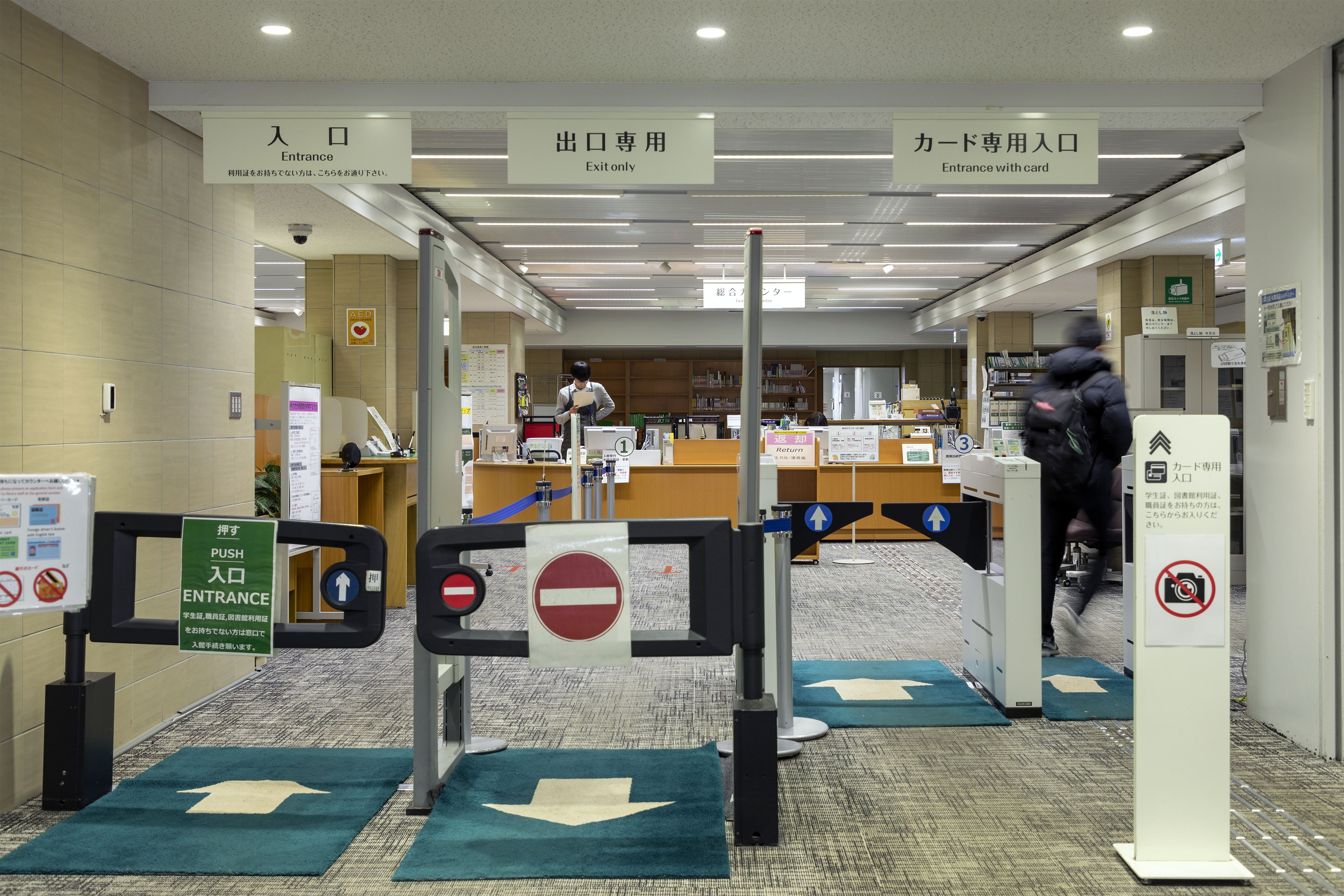
Entrance of the Central Library, which is usually open until 22:00 on weekdays and 19:00 on Saturdays, Sundays and public holidays.
There is also an attempt being made to establish a system that enables the management and presentation of the university’s research data jointly with the National Institute of Informatics. As “it truly represents the enterprising spirit of the Hokkaido University Library, for its contribution as a new open science to the enhancement of knowledge functions that should be provided by the library” according to Hasegawa, expectations for its future development of the system are high. To ensure substantial education and research support, the library staff themselves must improve their expertise through exchanges with advanced libraries and other activities. A staff exchange project based on the conclusion of an inter-library exchange agreement has been conducted with the University of Massachusetts Amherst (UMass Amherst), whose connection with Hokkaido University dates back to the days of Sapporo Agricultural College. The Hokkaido University Library sent staff members to UMass Amherst in 2015, and then invited staff members of UMass Amherst in 2017. Hasegawa has expressed his willingness to provide support that transcends the boundaries between researchers and library staff for further promotion of ambitious research and survey activities by the library staff, such as the survey of advanced cases of university libraries overseas and the launch of a project aimed at the acquisition of research grants.
Also serving as the leader library of the Open Access Committee established in the Japan Association of National University Libraries, the Hokkaido University Library is expected to play a leading role in the promotion of progress in open science and open access by university libraries.
Identity of Hokkaido University
The Hokkaido University Library has a number of precious items in its collection representing the history of Hokkaido, accumulated over the more than 140 years since the opening of Sapporo Agricultural College. It has provided many materials for TV programs and publications. Its collection, including the “Karafuto Nayoro Souotona Monjyo (Yaenkoro Ainu Monjyo)” (collection of scrolls containing records of the Karafuto Ainu) designated as an important cultural asset by the national government in July 2019, the Shinkotoni Tondenhei Village Records designated as a tangible cultural asset by the Hokkaido government, and a number of photos, figures, documents and other materials concerning Hokkaido in the Meiji era, has been displayed in the Library, as well as in the Hokkaido University Museum and Hokkaido University Archives. Digital archiving of these materials is also under way.
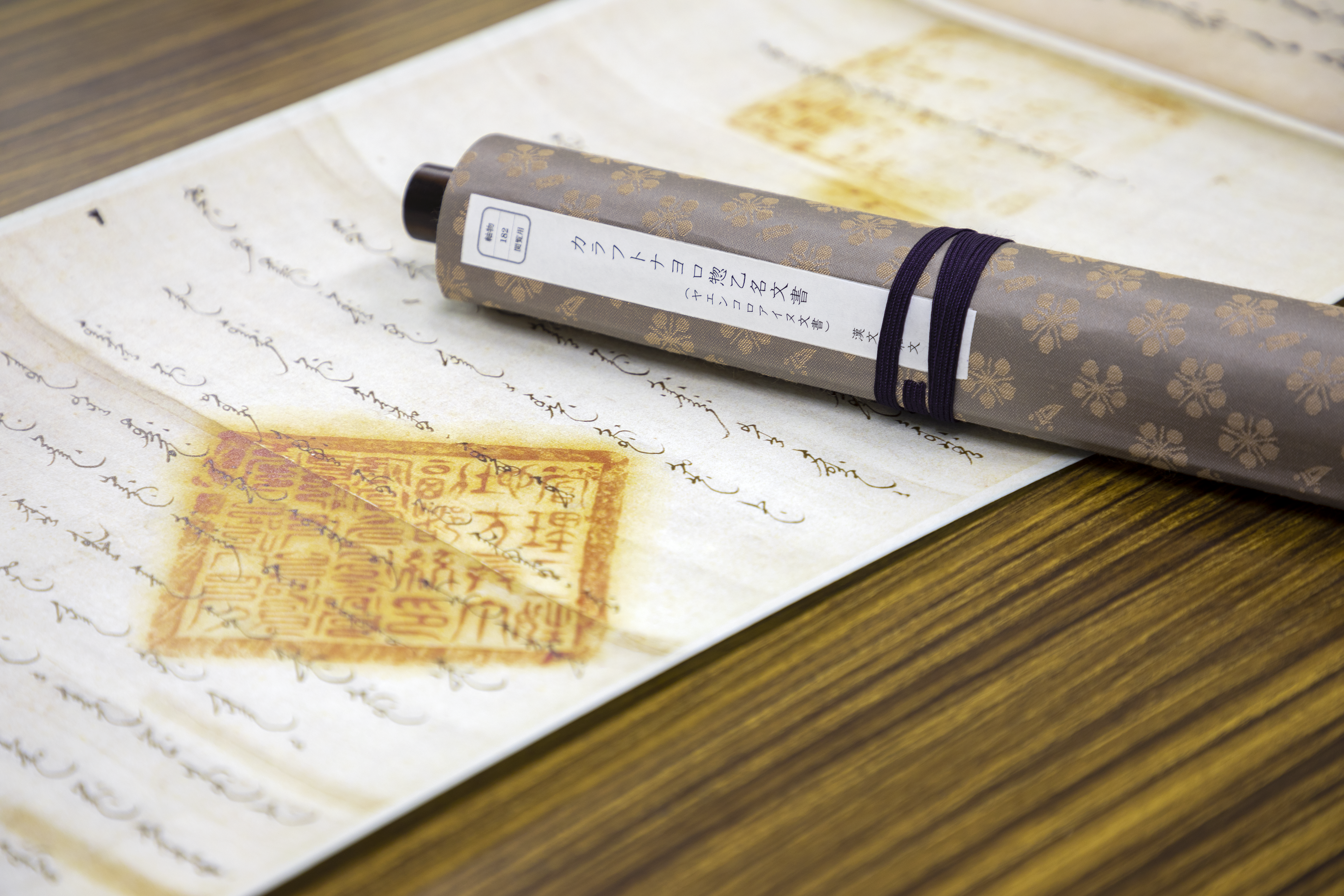
“Karafuto Nayoro Souotona Monjyo (Yaenkoro Ainu Monjyo)” (collection of scrolls containing records of the Karafuto Ainu, replica). Also available through the Northern Studies Collection Database (in Japanese only) on the Library website.
“These materials serve as the foundation for the identity of Hokkaido University, along with materials in the Hokkaido University Archives. The role of the University Library is to support this foundation,” emphasizes Hasegawa.
Hasegawa, who also serves as the director of the University Archives, has expressed his hope to strengthen the partnership between the University Library and University Archives toward the 150th anniversary of the university’s foundation. Compilation of the university’s 150-year history, linkage of networks and databases and facilitation of information dissemination in society will be promoted jointly with the Archives. Ways to present the university’s knowledge to society are also being sought by using the entire campus as a museum through cooperation among the University Library, Archives, Museum and Botanic Garden.
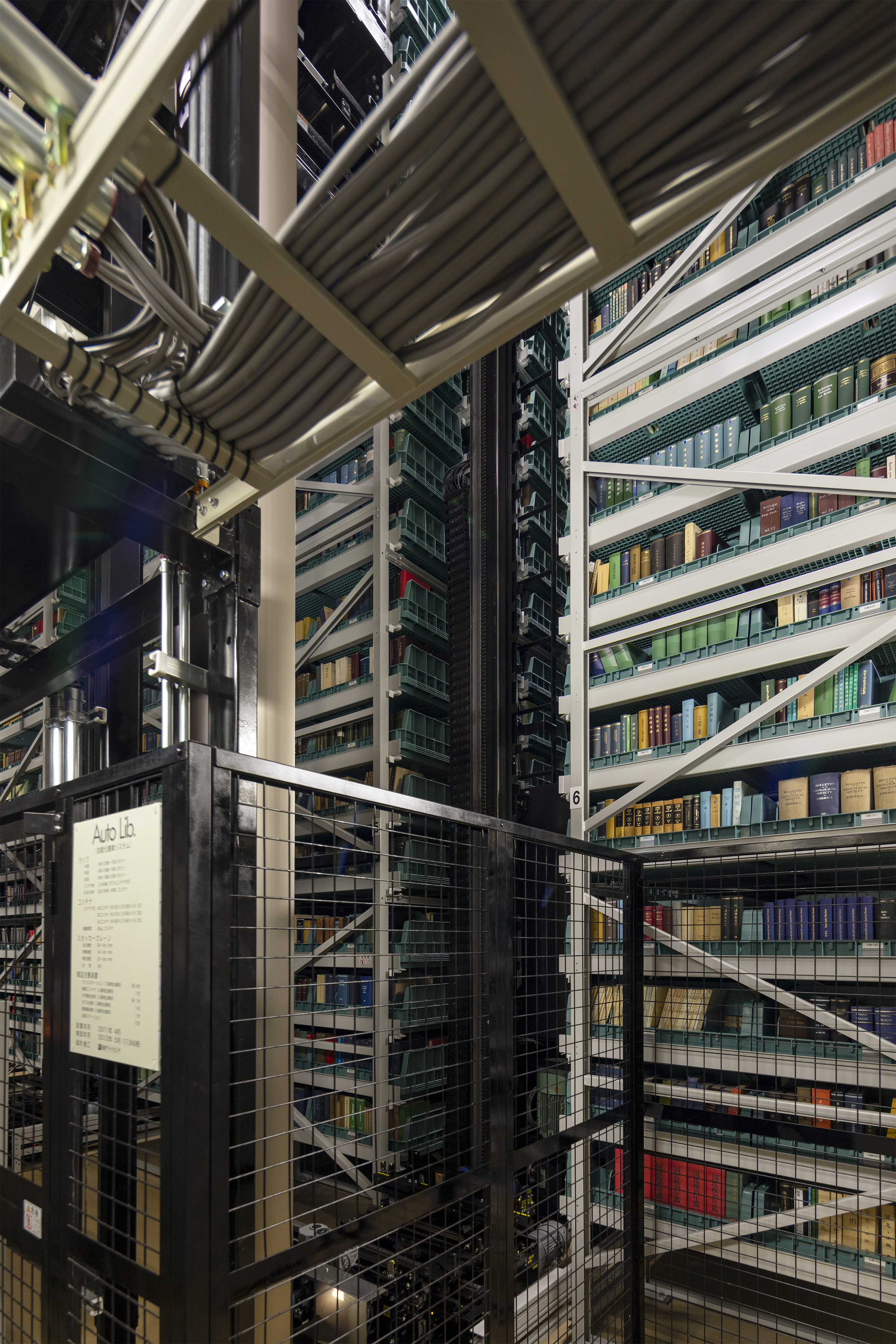
Automated stacks storage station in the basement of the Central Library.Approximately 300,000 books are stored here.
Together with the local community
Dissemination of knowledge to the local community is not only being carried out through the display of materials. The University Library also holds a variety of events for the general public. In August 2018, Professor Hiroshi Ishii, who is the associate director of the Massachusetts Institute of Technology Media Lab and a graduate of the School of Engineering of Hokkaido University, was invited to hold a workshop entitled “The Future Woven by Digital Archives: Remembering the Future with Prof. Hiroshi Ishii, MIT.” At the workshop, digital archive activities of the University Library, Museum and Archives were presented in addition to the lecture given by Professor Ishii. In September of the same year, Emeritus Professor of Tokyo University Motoyuki Shibata, known as a scholar of American literature and translator, gave a special talk entitled “Attraction of 200 years of American literatures” in which he conveyed the allure of American literature through comments on the works of J. D. Salinger, Mark Twain and other writers. Both events attracted many participants from within and outside the university.
The University Library will undertake various initiatives to support the lifelong learning of the general public as a university open to the local community.
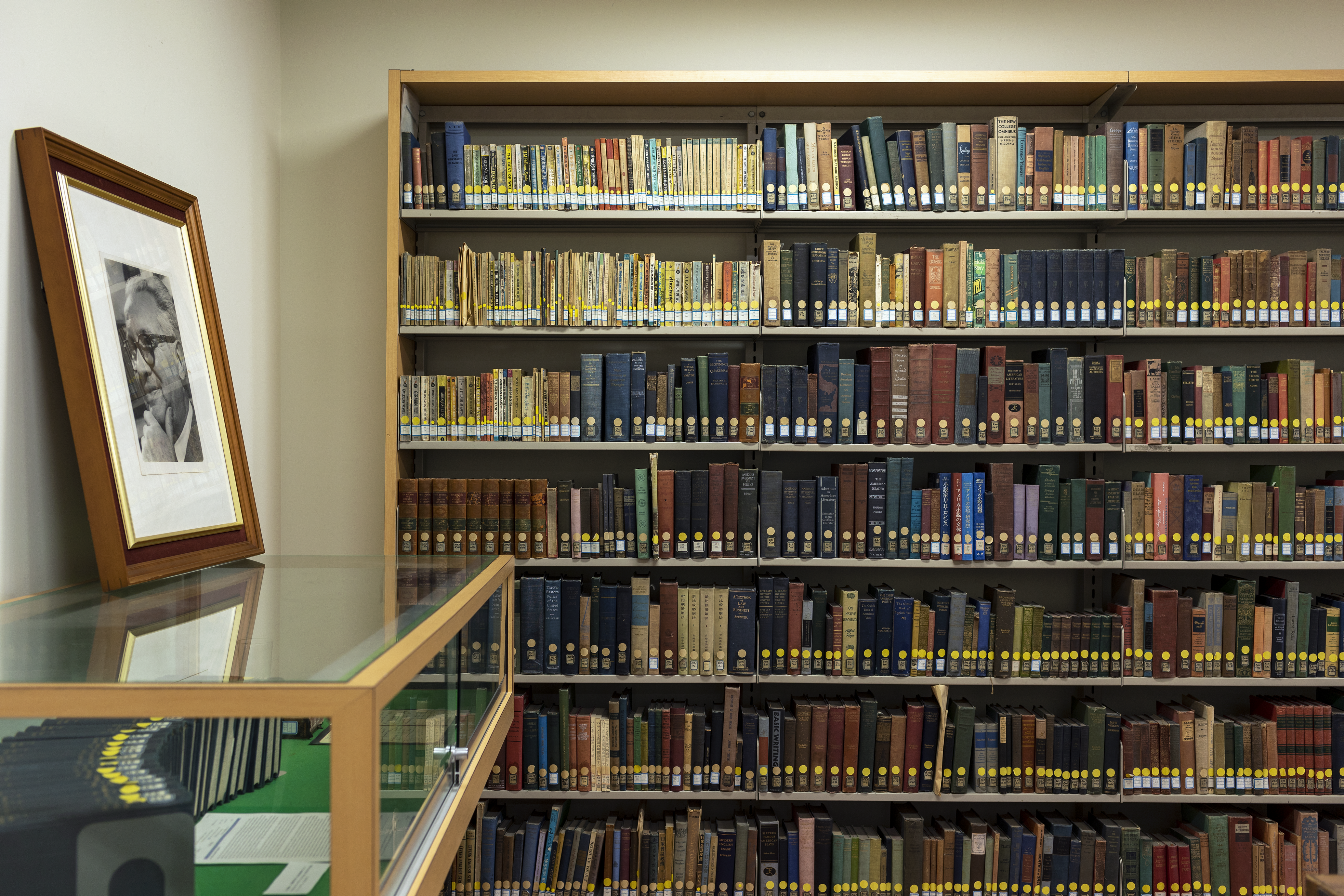
Lane collection on the third floor of the North Library. This room houses the collection of Dr. Harold M. Lane, who taught English in the days of the former Hokkaido Imperial University.
Aims of the University Library
With the progress of digitization and sharing of information through networks, academic materials handled by the University Library are expanding from books, magazines and other paper media to electronic books/journals, digital archives and research data. By managing and providing diverse materials based on such changes, the University Library is making efforts to continue serving as a knowledge base that contributes to the training of human resources and advancement of learning. Hasegawa says, “I want to convey the attraction of the library to the faculty members and students of the university, as well as to locals, while maintaining this knowledge base” and adds, “I really just want people to use and enjoy the library.”
The University Library is committed to continuing on its path with the history of the university, as a place for learning human knowledge and nurturing creativity.
This article was published in the Spring 2020 issue of Litterae Populi. The full list of articles can be found here.

